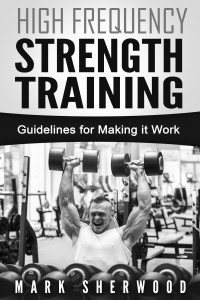For the next two or three articles, I am going to spend some time discussing training frequency. I want to provide some evidence that there are people who have successfully built muscle size and strength with high frequency training that is done for three or more sessions per week for each muscle group.
The first person that I will point to is a trainer named Chad Waterbury. Not only has Chad used high frequency training himself, but he has also trained many others with high frequency training and has seen the positive results that it can produce. Chad wrote a book called Huge in a Hurry. One of the sections in his book addresses high frequency training. He then followed that with another book called High Frequency Training 2 (Click Here to see the book!) that directly focuses on it to an even greater extent.
Chad had been working out for several years and had even studied physiology and strength training in college. He had basically been taught that the optimum training frequency for a body part is two training sessions per week. Then he happened to see an act in Los Vegas that was a combination of strength, balance, and gymnastics. It was performed by two men known as the Alexis brothers. Chad couldn’t help but notice that these two men were very muscular and demonstrate maneuvers that required immense strength, but what amazed him more than anything was that they often performed every day for a total of ten performances per week. These performances were as demanding as weight training workouts and they were being done on a daily basis, which violated everything that Chad had been taught about the need for long recovery times between workouts in order to build strength. This caused him to seriously question the accuracy of what he had been taught, so he began experimenting with high frequency training and found that it actually worked.
The Alexis Brothers Performing
I am not advocating that high frequency training be done in combination with any and all training methods. High frequency training is much more effective when combined with training that is hard enough to stimulate strength, but not so hard that it exceeds the body’s capacity to easily adapt to the workout. This means train only as long as you are at full strength during a set, and you only continue to do sets for a body part as long as you are at full strength. Stop during a set when your ability to exert force into your reps starts to diminish, and stop doing sets if your strength diminishes. Follow these guidelines if you want the optimum results from high frequency training. Best of training to you.

